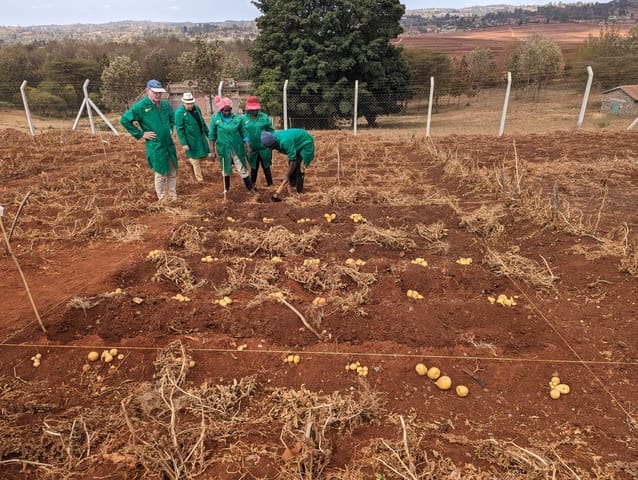
For centuries, potatoes have been a staple crop of many countries and, to this day, remain an essential crop in many nations worldwide. However, potatoes can be susceptible to various fungal infections called blights, which can wipe out entire crops. One of the most notable examples, the Irish Potato Famine, was caused by a potato blight called late-blight disease, which ran rampant in Ireland and Europe in the mid-18th century. Potato blights such as late blight and early blight still plague potato production globally, leading to potatoes being one of the most heavily sprayed crops in the world.
Dr. David Douches, Professor in the Department of Plant, Soil, and Microbial Sciences at Michigan State University (MSU), is developing a late-blight resistant potato to reduce the need for spraying harmful pesticides.
Douches and his potato lab research team engineered the potato to have three resistance genes at once, dubbed the “3R” gene, giving the crop a more robust resistance to the disease.“If the fungus that lands on the potato plant happens to overcome the resistance genes, we have two more waiting to shut it back down,” explained Tom Herlache, Technology Manager at MSU Technologies (MSUT).
Herlache works closely with Douches to protect Douches’ research, genetic modifications, and all other intellectual property domestically and abroad.”There is a lot of intellectual property around the potato,” Douches said. “Without the support, you can not move forward within the world of genetic engineering.”
The genes used to create the “3R” gene originated from the companies JR Simplot and Sainsbury Laboratory. MSUT worked with Simplot and Sainsbury on a material transfer agreement (MTA) to ensure that Douches and MSU were given the rights to the genes.
Douches’ research in the fight against potato blight has led to partnerships with The United States Agency for International Development (USAID) and international organizations such as the Global Biotech Potato Partnership. The International Potato Center (CIP) has also established a relationship with Douches. The CIP collaborates with Douches through their substation in Kenya, creating a tight connection to ensure that the potatoes will make it to market.
Douches’ work on blight-resistant potatoes initially started with a variety of potatoes commonly grown in Indonesia and Bangladesh. During the project’s first five years, Douches, along with his potato research team, spent the first three years creating the potatoes in a lab and monitoring their performance in the test field. The modified potato strains that proved the most successful were narrowed down over the subsequent two years to identify the most robust crop lines. Now the team has expanded its work with testing fields in three sites outside of the US: Indonesia, Nigeria, and Kenya.

“When [the 3R potatoes are] deployed in the farmer’s fields, it gives them food security on one level, and maybe they can market some of the crop,” said Douches. “Most people don’t realize how important potatoes are around the world, you wouldn’t believe how important it is in Nigeria.”
“The MSU Potato Breeding and Genetics team is pretty excited about their genes being deployed for humanitarian use to provide food security and sustainability in the developing world,” Herlache commented. However, for the crop to be successful in the market, Douches must demonstrate that the modified variety is identical to the original crop; that the look and taste of the potato will not be affected by the resistance gene.
The goal is to have these potatoes tested by farmers and approved for widespread use by the end of the five-year period. Douches is confident in his potatoes. He reported seeing “very positive results”.
“We feel that we’re in a good position,” Douches said. “There is plenty of research completed that we believe these potatoes will work against the late-blight disease.”
